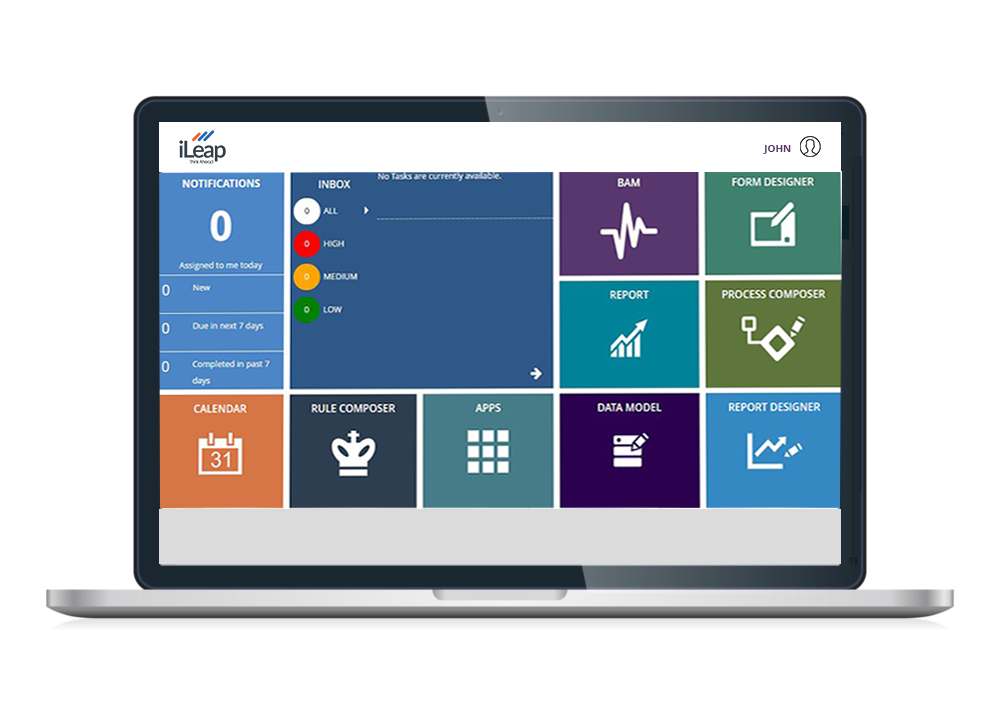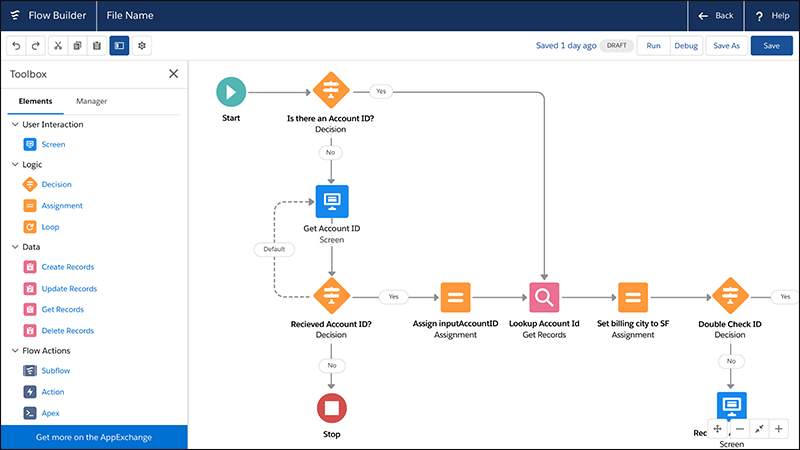Best News To Deciding On Legacy application modernization with Low-code
Wiki Article
Benefits Of Low-Code Application Development In The Sense Of Accessibility To Non-Developers
The following factors are key to making low-code development accessible to non-developers.
Drag-and–Drop Builders : Low-code platforms offer drag-and–drop interfaces which enable non-developers, without the need to write code, to develop visually appealing applications. This makes it simpler for people who don't have technical backgrounds to get involved in the process of development.
WYSIWYG Editors editors "What You saw is what You Get" editors help users create workflows and interfaces that appear similar to the final product which makes them simpler to comprehend.
Simplified workflow and logic
Visual Workflow Modelling: Users are able to create business procedures, application logic, and flowcharts by using models and visually-designed flowcharts. These methods are much more intuitive than traditional coding methods.
Pre-built Components of Logic Low-code platforms often come with pre-built logic (e.g. loops, conditional statement) that are easily adjusted, thus reducing the requirement for complicated programming.
Reusable Templates and Components
Library of pre-built templates Many low-code platforms offer templates for the most common types of applications which allow non-developers to start with a solid foundation and customize as needed.
Reusable Widgets And Modules: Users are able to use reused widgets. This simplifies the creation and eliminates the requirement for deep knowledge.
Guided Development and Tutorials
Step-by-Step guide: Platforms provide instructions and help on screen to non-developers who are building applications.
Interactive Tutorials Interactive and hands-on tutorials let users learn by doing. They build confidence making use of the platform.
Integration with existing tools
Seamless Integration: Low-code platform are designed to be integrated seamlessly with the existing business tools, systems as well as software (e.g. ERP, CRM). This enables non-programmers who do not have a experience in programming to create applications that can work with their current workflows.
APIs/Connectors: The built-in APIs/connectors enable non-developers to connect their apps to other services.
Collaboration Features:
Team Collaboration real-time collaboration, shared workspaces, and shared workspaces allow non-developers, business analysts and other stakeholder groups to effectively work alongside professional developers.
Access Control Based On Roles: Users who do not develop can be assigned roles and access levels that permit them to contribute without compromising security or functionality.
Automated Testing, Debugging and Debugging
Test tools are included: A lot of low-code platforms come with integrated debugging and testing tools. These tools streamline the procedure, making it simple for non-developers to ensure their applications are working correctly.
Error-highlighting: The platform highlights issues and suggests fixes to help non-developers.
The general rule is that low-code app development can open up development to a wider audience. This is a major benefit for those who aren't developers. By providing intuitive, visual tools and guided experiences low-code platforms enable business users to participate actively in developing and maintaining applications, which bridges the gap between requirements of business and the technical implementation. View the top rated discover more for Low-code Platform for application development for site examples including stored sql procedures, rad development, develop mobile application, rapid applications, azure sql server, cloud software applications, multiplatform mobile app development, sso azure, low code platforms, azure sql databases and more.

Benefits Of Low-Code Application Development For Governance And Security
Low-code development of applications offers a variety of advantages when it comes to governance and security, which are essential for ensuring that applications are safe and secure. They also ensure that they are well-managed throughout their lifecycle. Here are a few of the major advantages:
Unified management console: Low code platforms usually provide a central administration console from which administrators manage all applications and ensure consistent governance within the organization.
Role-Based Access Control: These platforms have robust control based on roles that allows administrators to define policies and then enforce these policies. This ensures that only those with authorization can modify or access specific parts of the application.
Compliance and Regulatory Adherence:
Conformity features: A lot of platforms that make use of low-code are constructed to comply with industry standards. These platforms offer frameworks and tools that ensure that the application is in line to these standards.
Audit trails and logging: Comprehensive audit trails and logging can be connected. This lets companies keep track of changes and access, as well as to ensure compliance with internal regulations as well as external regulations.
Improved Security Measures:
Data Encryption. Low-code systems offer encryption that is built into data both at rest and while it's being transferred, which ensures sensitive information is protected.
Security Certifications: Many low-code service providers have security certificates (e.g., ISO 27001, SOC 2) that show that they adhere to the highest security standards, offering extra security for users.
Automated Security Updates
Regular Patching and Updates Low-code platforms generally handle regular security updates and patches automatically, ensuring that applications are secure from latest threats without requiring developer intervention manually.
Security Monitoring - Continuous monitoring for security is typically part of the program. It provides real-time insight and alerts about security risks that could be a threat.
Data Governance
Data Access Policies: These software tools allow companies to establish as well as enforce and monitor data policies. This helps ensure that data are only accessible by authorized users and are used in a proper manner.
Data Masking and Anonymousization The tools built into the system to hide and anonymize data helps secure sensitive information in development and testing environments.
Consistent application lifecycle management:
Development and Deployment Pipelines Low-code platforms usually offer integrated deployment and development pipelines that include security checks, which ensure security remains intact throughout the entire application lifecycle.
Version Control - Integrated version controls help track modifications to applications and allow them to be reverted in the event of need. They also ensure the integrity and performance of the software.
User Authentication:
Single Sign-On - Support for single sign-on (SSO) and other advanced authentication mechanisms makes management easier and improves security.
Multi-Factor Authentication A lot of platforms come with integrated support for multi-factor authentication. This adds an extra layer of security to applications.
Monitoring of Policy Enforcement:
Policy Templates: Low-code platforms typically include pre-defined policy templates which help companies swiftly implement governance and security policies.
Tools for Compliance Monitoring: These tools are able to monitor and report continuously on the status of compliance. They allow you to find issues and deal with them in a proactive manner.
Integration into Existing Security Infrastructure
Seamless Integration: Platforms with low-code technology are built to integrate seamlessly with existing tools and infrastructure such as SIEM (Security Information and Event Management solutions) and firewalls.
API Security: API integrated security guarantees that integrations with other system are secure. Keep data safe and ensure the consistency of your application.
Training and Best Practices:
Numerous platforms provide guides and best practices for developing secure applications. They can help developers who are not developers to meet security standards.
Security Training: Some companies of low-code provide courses and other resources for security to help users learn how to create and maintain secure applications.
Overall, low-code application developers offer security and governance advantage which allows them to create and manage their applications in a controlled, compliant and secure manner. These platforms provide the tools and frameworks needed to secure sensitive data, enforce policies, and maintain regulatory compliance, all while facilitating the control and monitoring of the process of developing applications. Take a look at the best Legacy application modernization with Low-code recommendations for site recommendations including develop web app, driver jdbc, jdbc server, application development platforms, cross platform app development, app modernisation, build a docker container, rapid application design, develop web app, stored sql procedures and more.

Low-Code App Development Has Many Advantages In The Area Of Collaboration And Workflow
Low-code app development is an excellent option for companies looking to increase team efficiency by streamlining development processes. Here are a few of the most important benefits: Improved cross-functional collaboration:
Unified Development Environment (UDE): Low-code platforms provide one, unifying development environment that allows everyone in the team such as developers and business analysts, to work together efficiently. This removes the barriers.
Visual Development Tools Low-code platforms are simple to use and have a drag-and drop interface. This allows non-technical members of the team to participate in the development phase and ensures that business requirements are captured accurately.
Communication Enhanced
Real-Time Collaboration Many low-code applications offer real-time capabilities, like editing and commenting simultaneously or instant feedback. This enables constant communication and can help decrease the amount of time wasted in a back and forth discussion.
Shared Workspaces : Teams are able to collaborate in shared workspaces. They can access, edit and discuss the project components. This makes sure that everyone is working towards the same objective.
The management of workflows has been simplified
Built-in Project Management Tools : Low-code platforms usually include integrated project management software that aids teams plan, track, control, and coordinate their development projects. This includes the assigning of tasks, tracking progress and managing deadlines.
Workflow Automation: Automating repetitive tasks and workflows reduces the manual effort and mistakes, allowing teams to focus on more strategic tasks and enhancing overall efficiency.
More Rapid Iteration:
Rapid Prototyping: Platforms that use low-code enable rapid prototyping and iterative development which allows teams to create, test, and refine applications with shorter time. This allows for quick feedback and improvements.
Support for Agile Methodologies Using agile methodologies allows teams to work in sprints and continuously provide small amounts of functionalities, making it easier to adjust to changing requirements.
Accessibility:
Citizen Development: Low-code platforms allow business users the ability to create and modify apps with no coding experience. This eases the burden on IT as well as development teams and can provide faster responses to the business demands.
Training and onboarding. Intuitive tools and extensive training resources help new team members get acquainted increasing the overall quality of collaboration.
Centralized Documentation and Knowledge Sharing:
Integrated Documentation: Low-code systems often include features to maintain and create documentation within the platform itself, ensuring that all information about projects is accessible and centrally stored.
Knowledge Repositories. Teams can create repositories for knowledge, including templates and components that can be reused. This will help facilitate sharing of knowledge and will reduce the amount of duplicate information.
Consistency and standardization:
Standardized components: Standardized components, built in advance, ensures the consistency of applications. Team members can comprehend and work better on different parts.
Governance and Compliance: Built-in governance frameworks ensure that all development is in line with the organizational guidelines and regulations and reduce the possibility of non-compliance as well as ensuring that applications meet the quality standards.
Feedback and Improvement:
Integrated Feedback: Low-code platforms provide users with feedback mechanisms integrated into them that allow them to provide feedback easily on applications. The feedback is used in the development process.
Continuous Improvement: The capacity for applications to iterate quickly and make changes on the basis of feedback, while ensuring they are in line with the user's needs and business objectives.
Visualization, Reporting and Analysis
Real-time Analytics: Built-in analytics and reporting provide real-time information about project performance, user interactions and development. Decision-making based on data is possible.
Visual Workflow mapping: Visual tools to map workflows can be utilized by teams to optimize workflows. This allows them to identify bottlenecks and areas for improvement.
For collaboration, low-code apps are an excellent way to simplify workflows, bring diverse teams together and streamline tasks. This creates more effective and agile environment of development that is collaborative.
